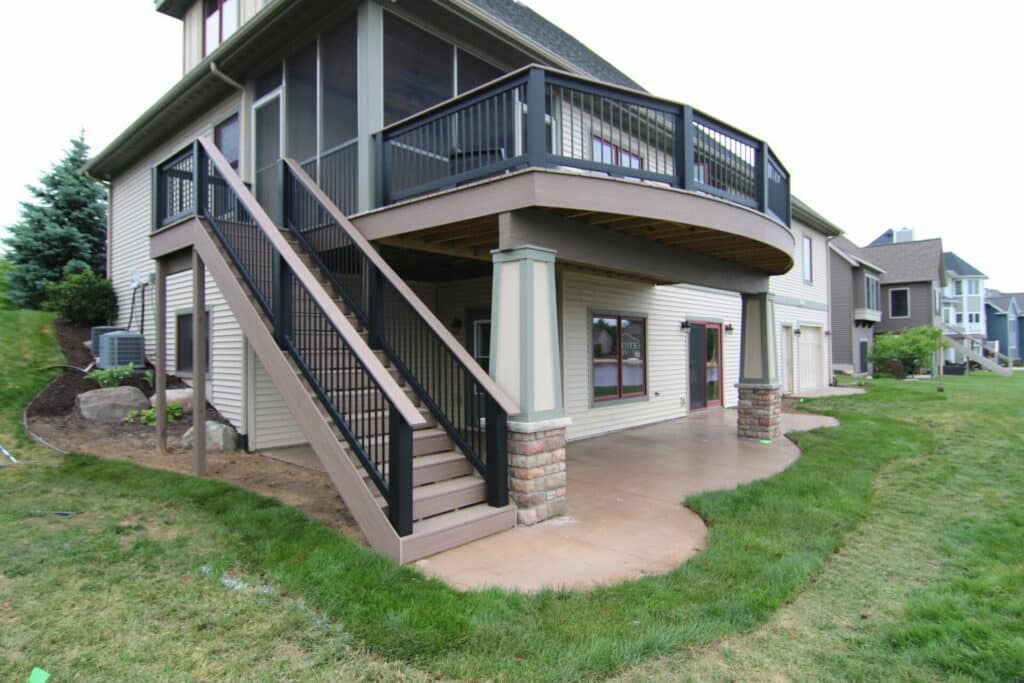How Long Does a Composite Deck Last
Homeowners looking to invest in a deck often prioritize durability and ease of maintenance. With so many decking materials available, finding the right balance between long-lasting quality and minimal upkeep can be challenging.
Composite decking, a modern alternative to wood, offers a solution that checks both boxes. What sets it apart, and why do so many choose it for their outdoor space? The answer lies in the unique benefits that go beyond surface appeal, ensuring a deck built for longevity.
The Lifespan of Composite Decking: Built to Last
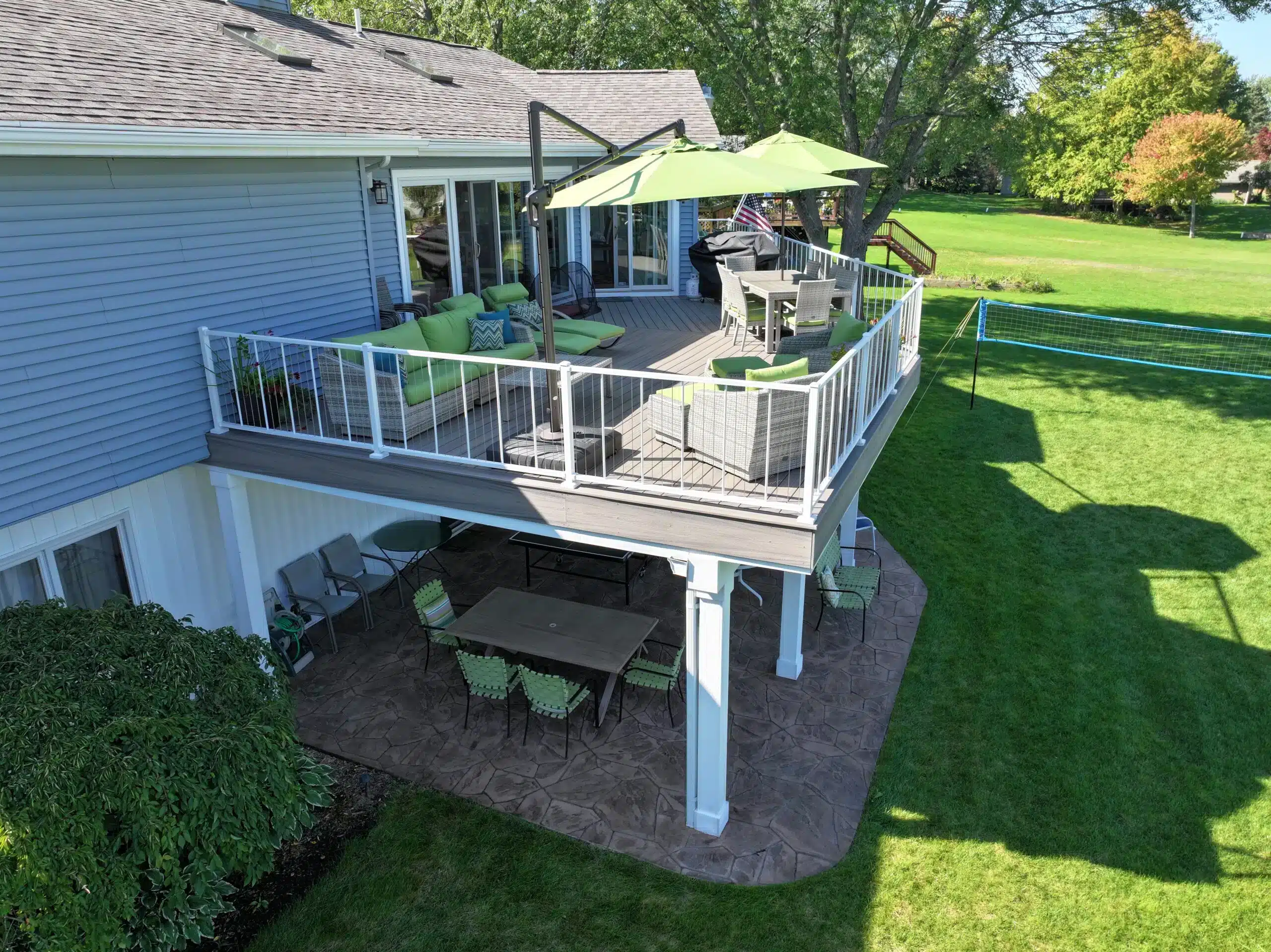
When investing in a deck, homeowners want to know how long it will last. Composite decking materials offer a lifespan far from traditional wood, providing years of enjoyment with minimal maintenance.
- Average Lifespan: Composite decking typically lasts 25 to 30 years, making it a long-term investment. Trex says its decking products last 25 to 50 years. TimberTech says its composite decking products can last 25 to 30+ years, and their advanced PVC decking can last more than 50 years. These products significantly outlast wood.
- Warranties for Peace of Mind: Many composite decking brands offer warranties between 25 and 50 years. These warranties often cover structural integrity as well as protection against fading and staining.
- Minimal Maintenance, Maximum Durability: Unlike traditional wood decks, composite deck boards don’t need frequent staining or sealing. Their resistance to rot, insects, and UV damage ensures they retain their appearance and strength over time.
Why Composite Decks Outlast Wooden Decks
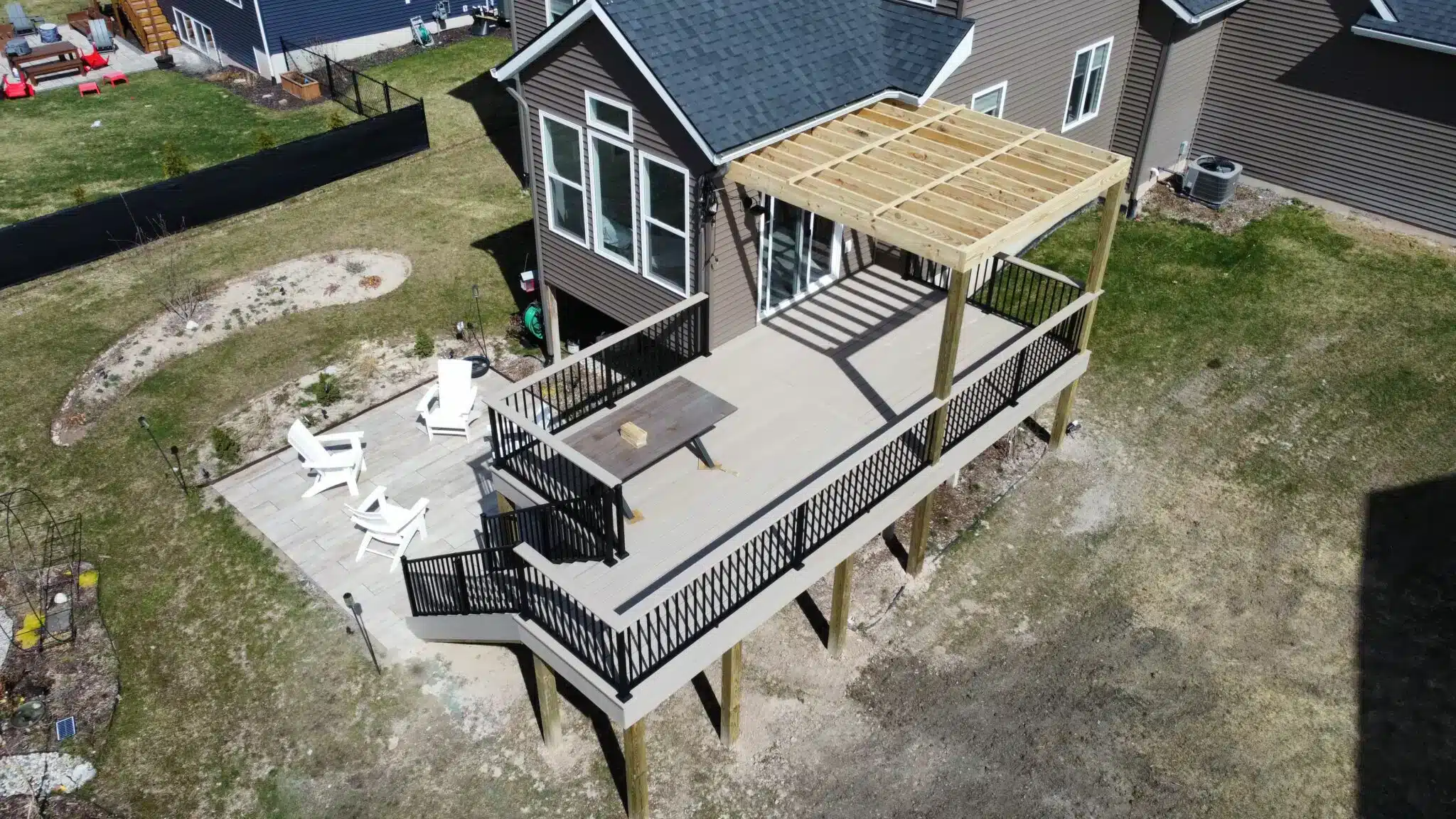
Homeowners looking for a deck that withstands the elements will find composite decking, made from wood fibers and recycled plastic, is built to endure. Its advanced materials offer superior resistance to common issues that weaken wood over time.
- Moisture Resistance: Composite decking repels water, preventing rot, swelling, and warping that plagues natural wood. This makes it ideal for regions with high humidity or frequent rain.
- UV Protection: UV inhibitors are built into composite materials to guard against fading. Unlike wood, which can lose color quickly, composite retains its appearance even in constant sunlight.
- Insect Resistance: Composite decking is impervious to termites and other wood-damaging insects, so homeowners never have to worry about structural damage caused by pests.
- No Splintering or Cracking: Composite boards stay smooth without cracking or splintering, providing a safer surface for families. The boards also maintain their integrity through seasonal temperature changes.
- Climate and Temperature Resistance: Composite decking withstands extreme heat, cold, and rapid temperature fluctuations. It’s designed to perform in a wide range of climates, making it a versatile choice for any location.
Low-Maintenance Deck Accessories to Consider
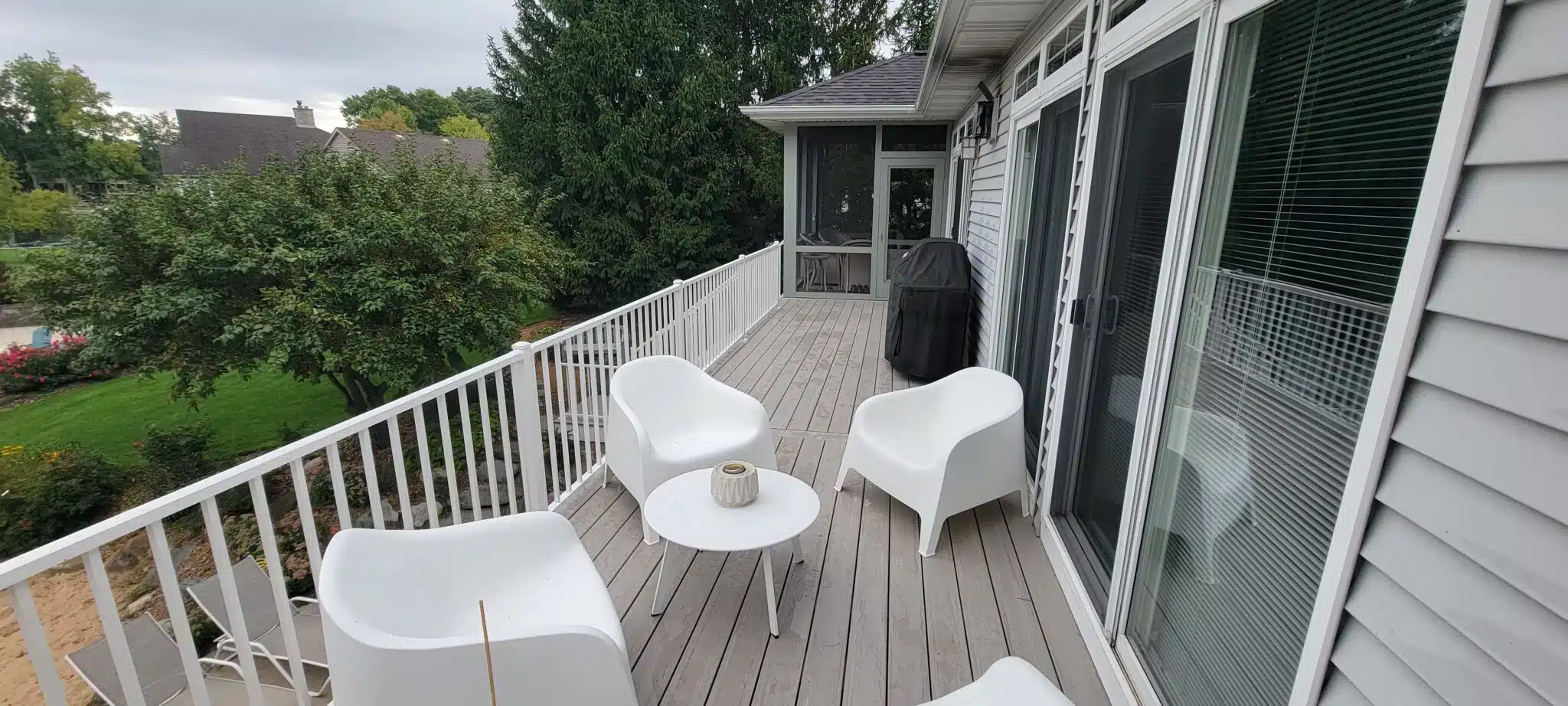
Adding low-maintenance accessories to your composite deck can enhance its durability and appearance while reducing upkeep. These options offer practical benefits without the hassle of frequent maintenance.
- Composite Railings: Composite railings match the durability of composite decking, creating a seamless, low-maintenance solution. They resist weathering and don’t require staining or painting, keeping your deck looking polished for years.
- Aluminum Balusters: Aluminum balusters provide strength and stability without rusting or corroding. Their maintenance-free design means no need for painting, and they offer a sleek, modern look.
- LED Deck Lighting: LED lights are long-lasting and energy-efficient, providing reliable illumination. They improve the safety and ambiance of your deck with minimal upkeep.
- Fascia and Trim: Composite fascia boards and PVC trim offer a clean, finished look that resists moisture and wear. They maintain their appearance without the need for regular maintenance or replacement.
Safety and Design Benefits
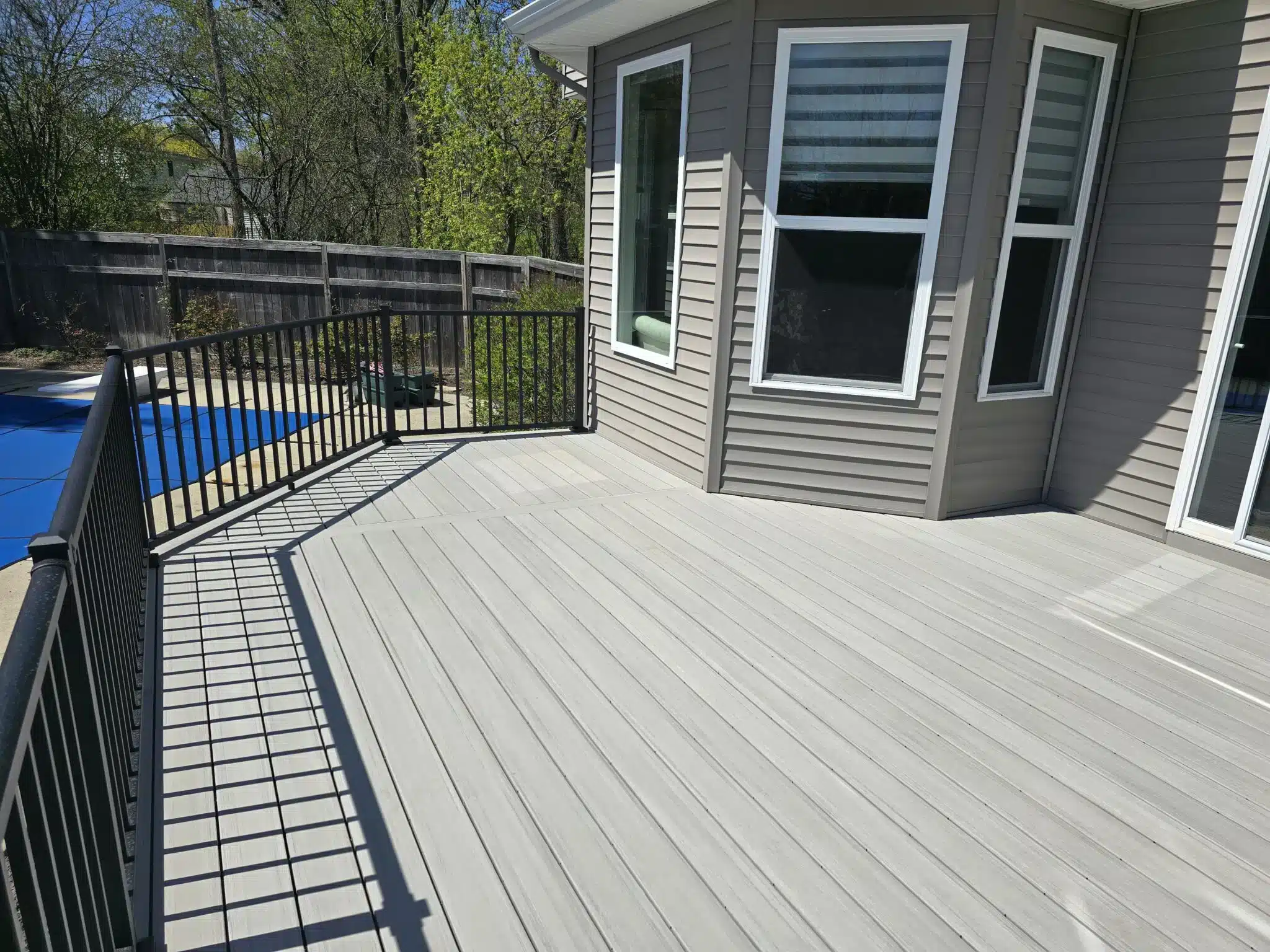
Through its thoughtful design features, composite decking enhances safety and longevity. These elements ensure that your deck remains functional and beautiful for years to come.
- Anti-Slip Surface: Composite brands with anti-slip surfaces improve safety and contribute to the deck’s durability by maintaining the structural integrity of the boards. The reduced risk of damage from accidents or wear in wet conditions helps preserve the deck’s condition over time.
- Variety of Stylistic Options: Thanks to UV protection and fade resistance, composite decking’s wide array of colors, textures, and finishes retains its look for decades. This means homeowners get the aesthetic appeal they desire without the need for frequent refinishing or repairs, ensuring the deck’s longevity.
Composite Decking: Eco-Friendly and Cost-Effective
Composite decking not only offers durability but also helps homeowners make an eco-conscious choice. It provides long-term savings, reducing the need for frequent repairs and upkeep compared to traditional wood.
- Sustainable Materials: Many composite decking products are made from recycled materials like reclaimed wood and plastic. This reduces the demand for new lumber, making it a more environmentally friendly option.
- No Need for Harmful Chemicals: Unlike wood, composite decking doesn’t require harsh chemicals like sealants or stains. This eliminates the use of toxic products, benefiting both your yard and the environment.
- Long-Term Cost Savings: Although the initial investment in composite decking is higher, homeowners save in the long run. There is no need for frequent painting, staining, or replacing damaged boards, so maintenance costs stay low.
- Reduced Likelihood of Repairs: Composite decking is designed to resist common issues like rotting, insect damage, and warping. This reduces the need for costly repairs, helping homeowners avoid the ongoing expenses often associated with wood decks.
Extending the Life of Your Composite Deck
With simple, proper maintenance, homeowners can keep their composite decks in top condition for decades. These low-effort practices ensure that the deck remains durable and visually appealing.
- Cleaning and Maintenance Tips: Regular cleaning, like sweeping debris, leaves, and dirt off the deck to prevent buildup. Clean the surface with soap and water twice a year, and quickly wipe up spills to avoid staining.
- Best Practices for Furniture and Heavy Objects: Use furniture pads under chairs and tables to protect against scratches. Avoid dragging heavy items across the surface to prevent gouging or dents.
- Proper Drainage: Ensure your deck has proper drainage to avoid standing water, which can shorten its lifespan. Water that sits on the deck for too long may lead to surface damage over time.
Looking for a Long-Lasting Composite Deck? Contact Precision Decks & Patios Today
Considering how long a wood deck lasts, we recommend a durable composite deck. When you are ready to explore a new deck, Precision Decks & Patios can help you make it a reality. Contact us for a free design consultation.
Composite Decking FAQs
Yes, but use a low-pressure setting to avoid damaging the surface. A pressure washer with a soft-bristle brush attachment is ideal for gently cleaning debris and stains without harming the composite material.
With proper maintenance, like regular cleaning and ensuring adequate drainage, the lifespan of composite decking can exceed 30 years. It may sometimes last up to 50 years, making it a long-lasting alternative to wooden decking.
Yes, wood deck boards can splinter and crack as they age, especially if exposed to moisture or not maintained properly. Composite decking, on the other hand, resists splintering and cracking throughout its lifespan.


